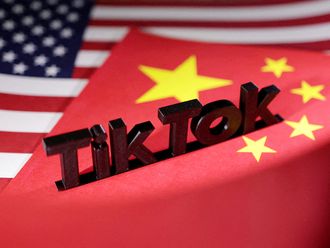Washington: There are a little more than two weeks between Juan, an electrician in the Bronx, and the date he cannot forget: 8am, March 21, 2017, when the federal government has told him to report for deportation.
Two weeks to decide: Avoid it, and try to preserve the American life he has built for a little longer, even as a fugitive. Go, and lose it all: his wife and son, his job, his apartment, his world.
“I would feel like an animal if I stay here and hide,” said Juan, 29, who asked that his last name not be used. “I want to prove that I can follow the laws. I want to make my case at this meeting, but I know that if I go, they’re going to deport me.”
In an immigration system mottled with escape hatches and hobbled by scant resources, Juan, who fled Colombia six years ago, is one of nearly 1 million people who have managed to linger in the United States despite having been ordered out of the country by an immigration judge — some of them more than a decade ago.
And with the Trump administration intent on sweeping perhaps millions of immigrants without legal status out of the country, the White House has not had to look far to make a quick mark. Because people with deportation orders have had their day in court, most of them can be sent out of the country without seeing a judge, sometimes within hours of being arrested.
“People who have been ordered deported and who are still here are the low-hanging fruit,” said Stephen Yale-Loehr, an immigration law professor at Cornell University. “Trump has said he has wanted to deport more people. The easiest way to get those numbers up are to take those people who’ve been ordered deported and go after them.”
President Donald Trump’s immigration agency has offered what looks like a preview: Immigration and Customs Enforcement agents recently deported to Mexico an Arizona mother who had been ordered out of the country four years ago.
But the follow-up will be complicated. The backlog of what the government calls “fugitive aliens” has persisted through Republican and Democratic administrations, inflamed conservatives who oppose illegal immigration, and resisted the immigration authorities’ attempts at enforcement.
Since 2006, even as the overall total of unauthorised immigrants in the United States has dipped, the number facing outstanding deportation orders has grown by more than half, to around 962,000 people from 632,726. More than half of them come from Mexico, El Salvador, Guatemala or Honduras. (Another 13,200 or so, as of early February, were already in the custody of customs officials.)
Despite the Bush and Obama administrations’ oft-stated commitments to focus on expelling those who pose a serious danger to their communities, slightly less than one in five people facing deportation has been convicted of a crime in the US.
The causes for delays can vary.
Deportations have been deferred for humanitarian reasons — like allowing mothers to stay with sick children in the US — or they have been frozen while an appeal is mounted. The Obama administration put off deportations for thousands of immigrants it did not consider priorities including Juan, the Bronx electrician, and Guadalupe Garcia de Rayos, the Arizona mother, often law-abiding people with strong ties to their communities.
“Felons, not families; criminals, not children,” President Barack Obama said in 2014, describing the kinds of people he wanted deported.
The White House has sought to make it harder for immigrants to be remain free inside the United States while their requests for asylum plod through the courts. They will be detained more often, or asked to wait in Mexico until a judge can rule.
“There are all kinds of things in the system that weren’t built to maximise compliance,” said David A. Martin, a professor of immigration law at the University of Virginia and a former immigration official in the Obama and Clinton administrations. It led to a climate, he said, that has prompted many people to not consider a deportation order a serious matter. “And that’s one of the attitudes that sometimes infuriates, with some justification, people who voted for Donald Trump.”
In a significant break from his predecessor, Trump is directing immigration agents to go after virtually anyone who is in the United States illegally, ending the reprieve for people who had not been considered priorities. “Ensure that aliens ordered removed from the United States are promptly removed,” one line of Trump’s executive order on immigration reads, with the crispness of a traffic sign.
“What has been lacking, up until a month ago, is a willingness and a commitment on the part of the administration to actually do it,” said Ira Mehlman, a spokesman for the Federation for American Immigration Reform, which supports stricter immigration controls. “Nothing is easy,” he said, but going after people who already have deportation orders “will be the easiest part of enforcing the president’s removal priorities.”
President George W. Bush’s administration dented the backlog by deploying fugitive teams that were supposed to track down unauthorised immigrants with deportation orders and criminal records. But the strategy drew a backlash, however, when the raids began snaring unauthorised immigrants who were not targets.
“That was something that caused a lot of controversy and a lot of anxiety in immigrant communities, because it meant these officers could stop anyone at any time,” said Randy Capps, director of research at the Migration Policy Institute, a non-partisan think tank.
Capps added that while the Obama administration narrowed the scope of such raids, he expected the Trump administration to return to the Bush model.











